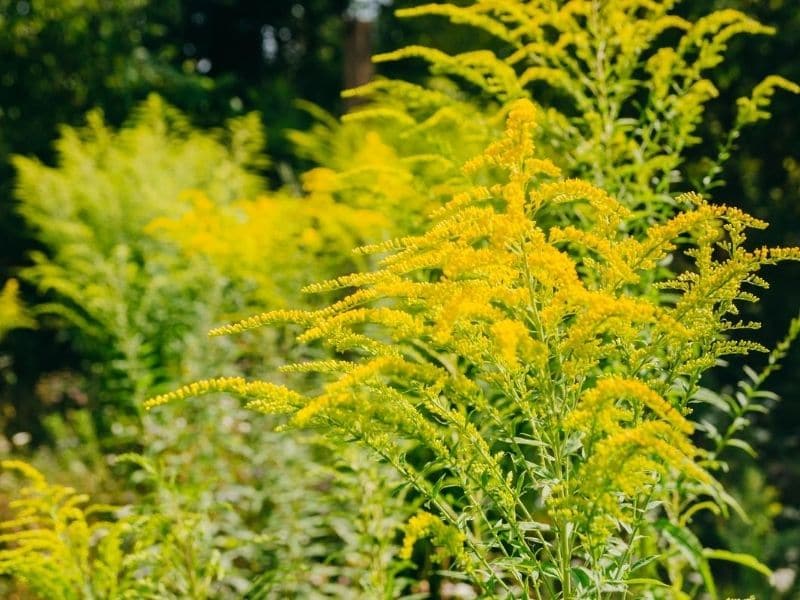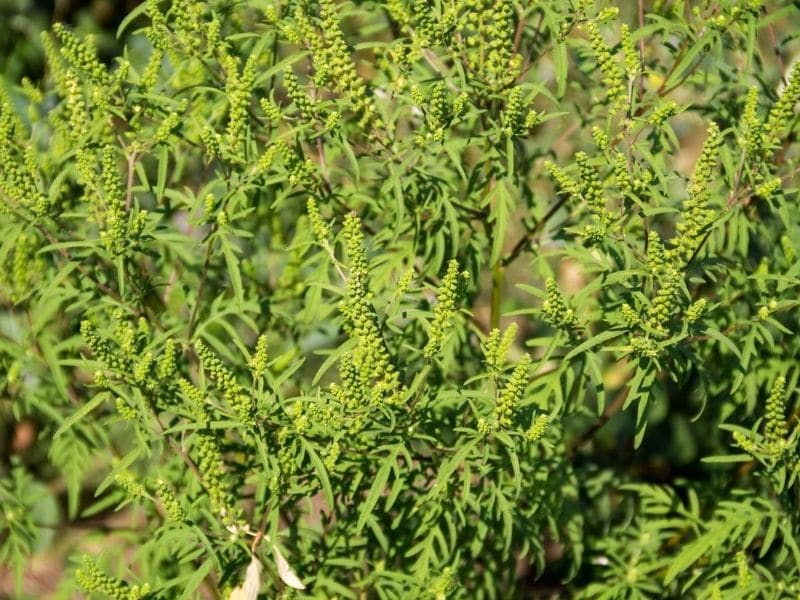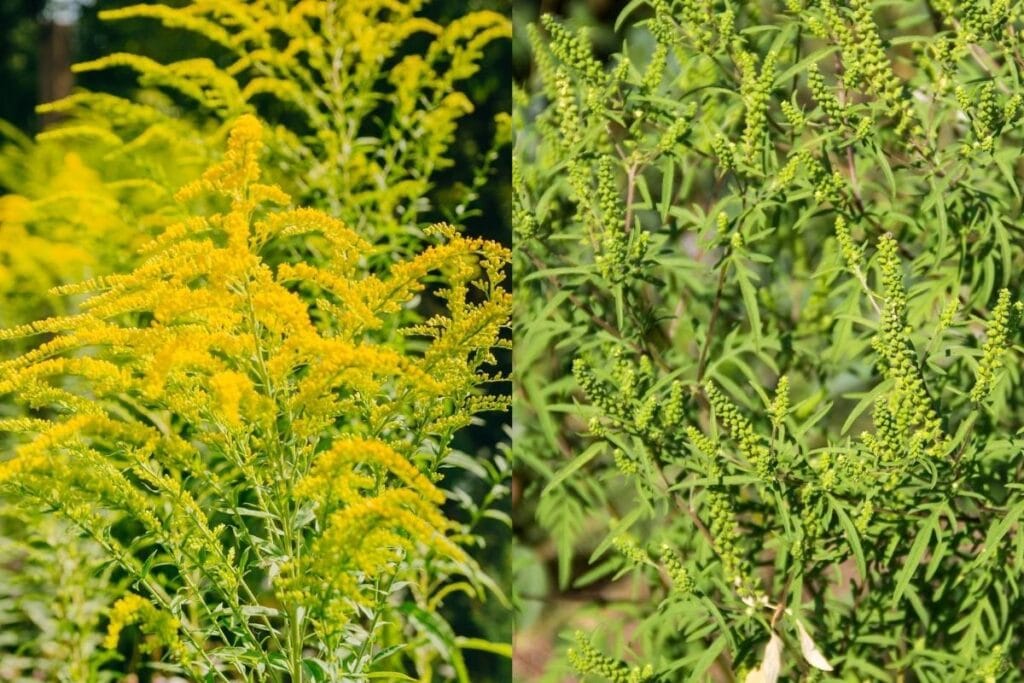Are you allergic to goldenrod? You might be, but you might actually be suffering from the case of the sniffles due to ragweed instead.
If you’re wondering about the difference between ragweed and goldenrod, you’ve come to the right place. The two plants are similar, but they also have several noticeable differences.
Here’s what you need to know.
How to Tell the Difference Between Ragweed and Goldenrod
What does goldenrod look like?
Goldenrod (also known as Solidago) is an invasive plant in many cases, but in others, it is a common native species that is a superb source of food for pollinators. It can grow aggressively, though, so it’s important to keep it under control despite all of its benefits.

There are more than 45 species of goldenrod plants around the country, many of which enjoy wide distribution.
Goldenrod and ragweed are different species, and while both are part of the Asteraceae family, that’s a large family that includes more than 23,000 other species of plants. It’s not a small family, to say the least!
What does ragweed look like?
Ragweed (also known as Ambrosia) often grows in the same areas as goldenrod, blooming at roughly the same times, too.

However, the best way to tell the difference between the two plants is that goldenrod has gorgeous, eye-catching bright yellow flowers, while ragweed flowers have small, green blooms that are often tough to see.
Giant ragweed can reach up to six feet tall, but it doesn’t grow as tall as goldenrod. Plus, the leaves look more like ferns.
Both bloom in mid- to late-August, coinciding with the peak of ragweed season. This is when the blooms release pollen and allergy sufferers may experience hay fever symptoms.
It is important to note that goldenrod is a perennial while ragweed is an annual.
Don’t mow and weed whack just yet. Instead, make sure you know the difference between ragweed and goldenrod so that you can preserve the resources in your area.
After all, goldenrod offers numerous benefits, particularly for pollinators. By keeping a bit of it around, you could be doing bees and butterflies a favor!
Ragweed vs Goldenrod: Which Causes Allergies?
When it comes to goldenrod vs ragweed, goldenrod is frequently blamed for allergy symptoms like runny nose, itchy eyes, headache, and congestion, particularly in mid- to late-summer. This seasonal misery is often referred to as hay fever.
However, what few people actually know is that goldenrod probably isn’t the plant causing your suffering—it’s likely ragweed.
Ragweed pollen is far more allergenic than goldenrod pollen. Goldenrod pollen has large particles that don’t move very far away from the plant. A single ragweed plant, on the other hand, is capable of producing over a billion small pollen grains.
Seasonal allergies are the most common in the fall and late summer, and allergy sufferers might blame the goldenrod they see all over the place. However, goldenrod is simply a signal that fall is on the way and doesn’t actually make you sick.
You can still be allergic to goldenrod, particularly when you touch the plant, but in most cases, it’s ragweed causing your symptoms instead. In fact, ragweed wind blown pollen is responsible for up to 90% of seasonal, pollen-induced allergies. It’s important to see a healthcare professional if your ragweed allergies become worse.
Goldenrod species, though, has a variety of medicinal benefits. It can be used in a tonic, when mixed with apple cider vinegar, as a tonic to combat the flu and various colds. It can also just benefit your immune system in general, particularly over the winter months.
As long as you aren’t allergic to goldenrod (something that is rare), it can also be used to treat skin rashes, too. Some people even use it on their dogs or cats to treat itchy hot spots.
Which Benefits Pollinators: Ragweed or Goldenrod?
Pollinators can both benefit from ragweed and goldenrod, but goldenrod is actually more beneficial to bees, butterflies, and other pollinators.
Both types of plants produce pollen, but goldenrod is pollinated by insects and not the wind, as is the case with ragweed.
In fact, it is these unique differences in pollination habits that make ragweed so allergenic. Because ragweed is air-pollinated, it is incredibly potent. It’s also difficult to control and its pollen can spread hundreds of miles.
Goldenrod flowers, on the other hand, contain nectar that attracts pollinating insects. The pollen grains remain attached to the insect bodies.
FAQs
Does Golden Rod cause allergies?
No, Goldenrod (Solidago spp.) is a flowering plant known for its bright golden flowers and is not a significant allergen for most people.
How do you identify ragweed?
Ragweed can be identified by its finely divided leaves and inconspicuous green flowers arranged in spikes or clusters.
What is the real name for ragweed?
The real name for ragweed is Ambrosia, and it belongs to the Asteraceae family.
Is goldenrod poisonous?
No, Goldenrod is not generally considered poisonous, although some individuals may experience skin irritation or allergic reactions upon contact. However, it is not a major allergen like ragweed.
Photo by OlyaSolodenko and Dudaeva/depositphotos







